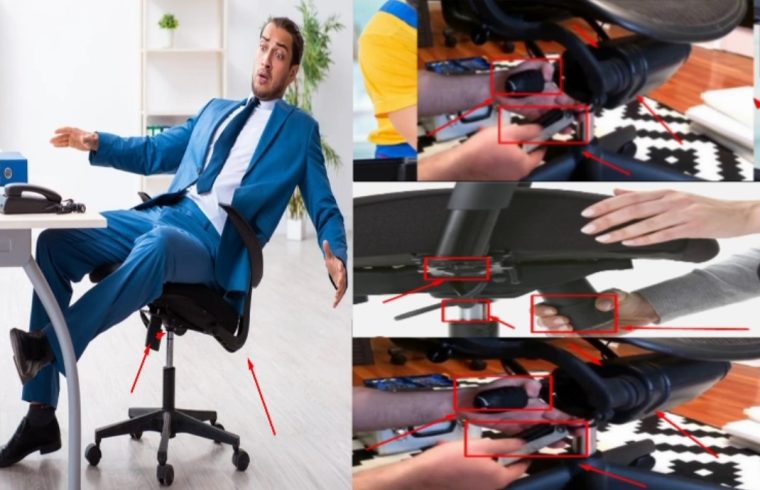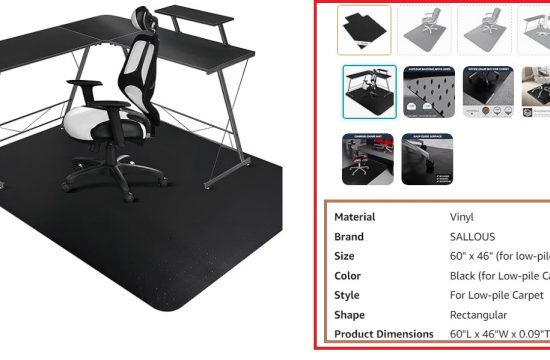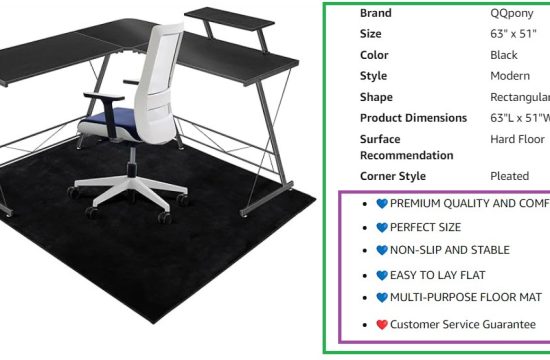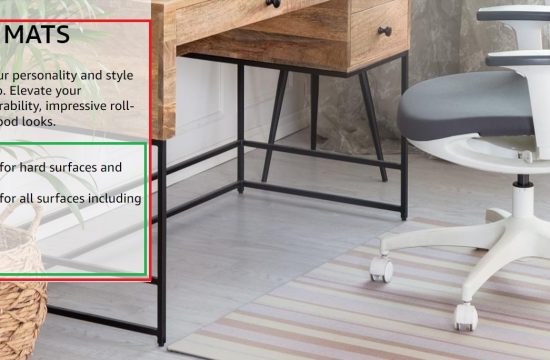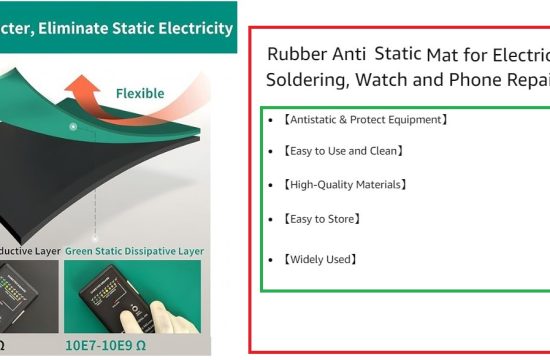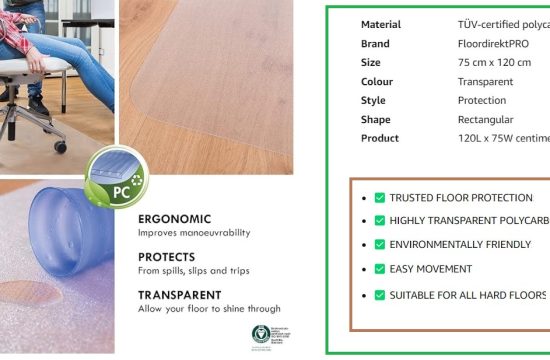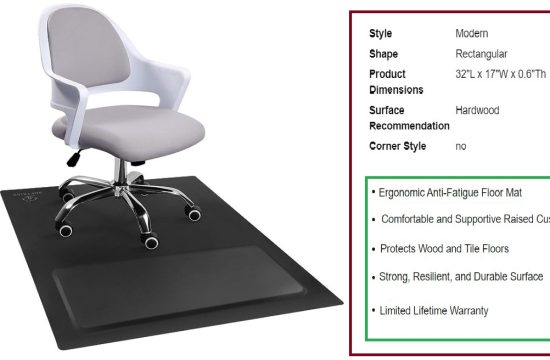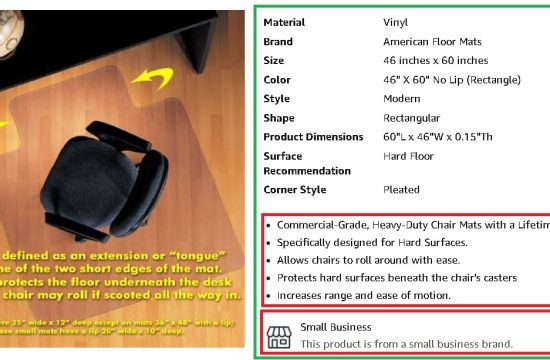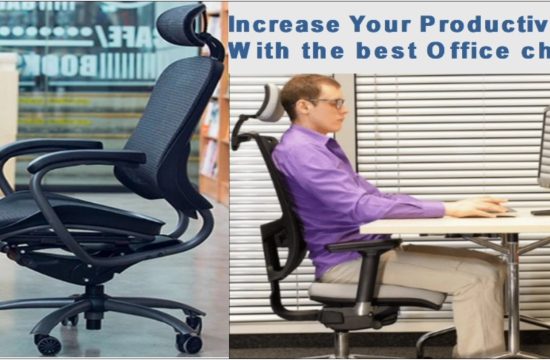Office chairs are an essential piece of furniture in any workspace.
They provide the necessary support and comfort for long hours of sitting, promoting productivity and overall well-being.
However, it’s not uncommon to encounter issues with office chairs, such as one that leans back. This can be not only uncomfortable but also detrimental to your work performance.
In this blog post, we will discuss the common problem of office chairs that lean back and provide you with effective solutions to fix this inconvenience.
The importance of a properly functioning office chair
Before diving into the troubleshooting steps, it is essential to understand why a properly functioning office chair is so crucial.
First and foremost, an office chair that doesn’t lean back can significantly impact your comfort during long working hours. Sitting in an awkward position not only strains your muscles but can also lead to back, neck, and shoulder pain.
Moreover, a chair that leans back excessively or unexpectedly can even pose safety hazards, potentially causing injuries.
Furthermore, having a chair that properly supports your body and offers adjustable features greatly enhances your productivity. A comfortable chair allows you to maintain good posture, enabling better focus and concentration.
On the other hand, constantly readjusting yourself due to an unstable chair can be a significant distraction, hindering your ability to perform tasks efficiently.
Therefore, learning how to fix an office chair that leans back is crucial for ensuring a smooth and comfortable work experience.
Identifying the cause of the lean
To fix a leaning office chair, it is necessary to identify the root cause of the issue. Leaning can be caused by various factors, including loose screws or bolts, damaged gas lift cylinders, or worn-out mechanical parts.
By closely inspecting the chair, you can determine the specific problem and address it accordingly. This could involve tightening loose screws, replacing faulty parts, or lubricating mechanisms to restore the chair’s stability.
Steps to fix an office chair that leans back
Once the cause of the lean has been determined, you can move on to fixing the issue. Start by gathering the necessary tools, such as a screwdriver or wrench, to dismantle and repair the chair.
Carefully follow the manufacturer’s instructions, if available, to ensure you disassemble and reassemble the chair correctly. This will also help in identifying any damaged or worn-out components that need replacing.
If the tilt mechanism is causing the problem, consider replacing it entirely with a new one. Gas lift cylinders are another common culprit
Understanding the Problem
An office chair is an essential piece of furniture for any professional setting. It is designed to provide comfort and support during long working hours.
One common issue that many people face with their office chairs is that they lean back unintentionally. This can be quite frustrating, especially when you’re trying to maintain a proper posture or focus on tasks at hand.
Understanding the reasons behind this tilt trouble is the first step towards finding a solution.
One possible reason for an office chair leaning back is loose components. Over time, the screws and bolts that hold the chair together can become loose due to regular usage.
This can cause instability and make the chair tilt back unexpectedly. Another reason could be faulty mechanisms within the chair.
The tilt mechanism is responsible for controlling the angle of the backrest and seat. If this mechanism is damaged or worn out, it can result in the chair tilting back without any control.
Not only is a tilting chair frustrating, but it can also lead to discomfort and potential health issues. When a chair leans back, it disrupts the natural alignment of the spine, forcing the body into an unnatural position.
This can strain the muscles and lead to back pain.
Moreover, an uncontrolled tilting motion can cause sudden jerks and jolts, which can result in accidents or falls. Sitting in a tilted position for prolonged periods can also put unnecessary pressure on certain body parts, leading to numbness or tingling sensations.
To fix an office chair that leans back, it is important to address the root cause of the problem.
Start by checking for any loose screws or bolts and tighten them if necessary. If the tilt mechanism is faulty, it may need to be repaired or replaced.
It is advisable to consult a professional or contact the manufacturer for assistance in such cases. Regular maintenance and inspections of the chair can also help prevent future tilting issues.
In addition to fixing the chair itself, it is equally important to be mindful of one’s posture while sitting.
Good posture and proper ergonomics can go a long way in preventing discomfort and maintaining spinal health.
Make sure to adjust the chair’s height and backrest angle to match your body’s natural alignment. Utilize lumbar supports or ergonomic cushions if needed.
Taking frequent breaks and incorporating some stretching exercises throughout the day can also help alleviate muscle tension and improve overall comfort.
Tools and Materials:
When it comes to fixing an office chair that leans back, having the right tools and materials is essential. Here is a list of items you will need to rectify the tilt troubles of your chair:
- Screwdriver (Phillips or flathead, depending on the screws on your chair)
- Allen wrench (if your chair has screws that require this tool)
- Replacement parts (such as a new tilt mechanism or gas cylinder)
- Lubricant (to ensure smooth functioning of the chair)
- Safety goggles (to protect your eyes during the repair process)
By gathering these tools and materials beforehand, you can save time and frustration during the repair process. It’s always better to be prepared!
Identifying the Issue:
Before diving into the repair process, it’s important to identify the root cause of the tilt troubles.
Is your chair leaning back excessively, making it uncomfortable to sit in?
Or perhaps it won’t lean back at all, leaving you feeling stiff and restricted?
Understanding the issue will help you find the most effective solution.
Adjusting the Tilt Mechanism:
If your office chair leans back too far, adjusting the tilt mechanism may solve the problem. Locate the tilt adjustment knob under the seat and turn it clockwise to reduce the tilt tension.
If you don’t have a knob, look for a bolt or screw that allows you to adjust the tension manually. Turning it clockwise typically decreases the tension and prevents excessive tilting.
Replacing Broken Parts:
In some cases, the tilt mechanism itself may be broken or damaged beyond repair. If this is the case, you’ll need to replace it with a new one.
This involves removing the old mechanism by unscrewing it using the appropriate tools and then installing the replacement part.
Be sure to refer to the manufacturer’s instructions or seek professional guidance if needed to ensure proper installation.
Addressing Gas Cylinder Issues:
If your office chair won’t lean back at all, the gas cylinder may be the culprit. Over time, these cylinders can lose pressure or become faulty, causing the chair to remain locked in an upright position.
Replacing the gas cylinder entails removing the seat from the base of the chair, detaching the old cylinder, and installing a new one.
Remember to follow safety precautions and refer to the manufacturer’s instructions for a smooth and successful replacement.
Step-by-Step Repair Guide
Assessing the Issue:
– Begin by explaining to your readers how to identify the specific problem causing their office chair to lean back. Mention common symptoms, such as an uneven or wobbly seat, difficulty maintaining an upright position, or visible damage to chair components.
– Encourage readers to sit in the chair and pay close attention to when and how it leans back. Ask them to note any clicking or unusual sounds, which can provide clues about the issue.
Disassembly:
– Guide readers through the safe disassembly of their office chair to access the internal components. Emphasize the importance of safety gear, such as safety glasses and gloves.
– Provide a list of necessary tools, such as screwdrivers, pliers, and Allen wrenches, and explain their uses during the disassembly process.
– Include clear and labeled images or diagrams of the chair parts to help readers locate and remove screws, bolts, and other fasteners.
Inspection and Diagnosis:
– Describe how to inspect various parts for wear, damage, or misalignment. This can include examining the chair’s frame, seat, backrest, and base.
– Explain how to diagnose the root cause of the tilting issue. Emphasize the importance of a thorough inspection to identify all potential problems.
Repairing Common Problems:
– Provide detailed solutions for common issues that lead to office chairs leaning back. These may include:
1. **Loose Screws**: Explain how to identify loose screws and provide guidance on tightening them properly.
2. **Damaged Hydraulic Cylinders**: Describe how to assess the condition of the hydraulic cylinder and, if necessary, how to replace it.
3. **Worn-Out Tilt Mechanisms**: Offer step-by-step instructions on repairing or replacing worn-out tilt mechanisms, including the removal and installation of these components.
– Include troubleshooting tips for each repair scenario, such as what to do if certain parts are difficult to remove or if replacement parts are needed.
Reassembly:
– Explain the step-by-step process of putting the chair back together after making necessary repairs. Include clear instructions on reattaching each component and securing fasteners properly.
– Remind readers to follow the reverse order of disassembly and ensure that all parts are aligned and fitted securely.
Testing:
– Encourage readers to test the chair to ensure the issue is resolved and that it no longer leans back. Advise them to sit in the chair and make adjustments to the tilt mechanism to confirm that it functions correctly.
– Offer guidance on making final adjustments for comfort, such as setting the chair’s tension to their liking.
By providing a detailed and comprehensive repair guide for fixing an office chair that leans back, your readers will have the confidence and knowledge to tackle this common issue themselves.
Include clear visuals and emphasize safety precautions throughout the process to ensure a successful and safe repair.
Maintenance Tips
Regular maintenance is key to preventing future tilting problems with your office chair.
By following a few simple steps, you can keep your chair in good condition for years to come.
Here are some maintenance tips to ensure your chair remains sturdy and level.
It’s important to regularly inspect the chair for any signs of wear and tear.
Check for loose screws, damaged parts, or any other issues that may affect its stability. If you notice any problems, address them immediately to prevent further damage.
Make sure to clean your chair regularly.
Dust and debris can accumulate over time, causing the mechanisms to become clogged or malfunction. Use a soft cloth or brush to remove any dirt from the chair, paying special attention to the areas where the backrest and seat connect.
Another crucial aspect of maintenance is lubrication.
Apply a lubricant, such as silicone spray or WD-40, to the moving parts of the chair to ensure smooth operation.
Be sure to follow the manufacturer’s instructions and avoid over-lubricating, as this can lead to a greasy buildup.
Consider the weight capacity of your chair.
Exceeding the recommended weight limit can put unnecessary strain on the chair’s components and increase the likelihood of tilting issues.
If you frequently find yourself leaning back and putting extra pressure on the chair, it may be time to consider a chair with a higher weight capacity.
Regularly adjust your chair’s height and tilt settings to prevent overuse of one specific position.
This will help distribute weight evenly and reduce the strain on any particular area of the chair.
Remember to refer to the user manual for proper adjustment instructions and recommended usage guidelines.
When to Seek Professional Help
While DIY repairs can often save you time and money, there are certain situations where it may be best to seek professional assistance when attempting to fix an office chair that leans back. These cases may involve complex mechanisms or extensive damage that requires specialized knowledge and tools beyond the capabilities of the average person.
One instance where professional help is advised is when the chair’s tilt mechanism is broken or malfunctioning.
This intricate system is responsible for the smooth tilting motion of the chair, and attempting to repair it without proper understanding can lead to further damage.
Professionals have the expertise to diagnose the issue accurately and provide the necessary repairs or replacements.
Another scenario that calls for professional intervention is when the chair’s frame or base is compromised.
If there are cracks, fractures, or structural damage, it’s crucial to have the chair assessed by a professional to ensure it is safe to use.
They will be able to determine if the damage can be repaired or if a replacement is necessary, prioritizing your safety and preventing any potential accidents.
Severe wear and tear can also be signs that it’s time to consult with a professional.
If you notice excessive looseness or wobbling in the chair’s components, it may indicate worn-out parts that require professional inspection.
These experts will be able to identify the specific components that need replacement and ensure that the chair is restored to its optimal functionality.
Additionally, if you have attempted DIY repairs but have not been successful in fixing the leaning issue, seeking professional help is recommended.
Sometimes, despite our best efforts, certain problems can be challenging to diagnose and resolve without the right knowledge and skills.
By calling in a professional, you can avoid further frustration and potential damage to your office chair.
Remember, safety should always be a top priority.
If you have any doubts or concerns about your ability to successfully repair your leaning office chair, it is wise to seek professional assistance.
Experts in the field have the necessary expertise, tools, and experience to tackle complex issues, ultimately ensuring that your chair is fixed properly and will provide continued comfort and support for years to come.
In conclusion,
Having an office chair that leans back can be quite troublesome and uncomfortable. However, by following these simple steps, you can easily fix the issue and restore your chair to its upright position.
Remember to start by identifying the root cause of the problem, whether it be a loose or broken mechanism, a faulty gas cylinder, or worn-out casters.
Once you have identified the issue, you can proceed to tighten or replace the necessary parts.
If you are experiencing tilt troubles with your office chair, do not worry.
With a little bit of troubleshooting and the right tools, you can easily fix the problem and enjoy a more comfortable and efficient work environment.
Remember to identify the root cause, tighten or replace the necessary parts, and maintain your chair regularly.
Taking action to fix your leaning office chair will not only improve your comfort and productivity but also demonstrate your professionalism and commitment to creating a conducive workspace.
So, go ahead, take charge, and fix that leaning chair!
